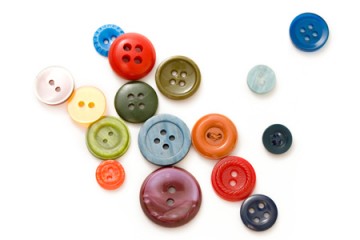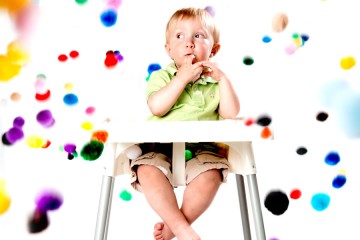The babies sat in highchairs in front of a brightly lit puppet stage. The curtain lifted dramatically, and an adult's hand appeared, waving a toy car or a ball. "Look! Watch this," the researcher behind the stage said cheerfully, sending the toy rolling down a ramp. But there was a surprising twist: When the toy reached what looked like a solid wall, it somehow passed through.
Most of the 11-month-old babies present in the Johns Hopkins University Laboratory for Child Development stared at the rule-breaking toy with interest. But soon, some of them looked away, while others found their attention pulled back to it. Some stared three or four times longer than the others, gazing at the optical illusion in front of them.
Researchers have known for decades that babies understand a surprising amount about the world around them, including concepts like gravity and object solidity. So when the toy started rolling down the ramp, the babies knew that it should stop at the solid wall and were surprised when it didn't. But some were more curious about the phenomenon than others.
Now, the study, published in Proceedings of the National Academy of Sciences in July, is the first ever to show this curiosity discrepancy—and that the curious babies also go on to become more curious toddlers.
"Babies tend to look longer at surprising events, but not all of them do," says Lisa Feigenson, co-director of the lab. "What we hypothesized was that some babies may actually be more interested than other babies at those unusual events in the world."
Her co-author, Jasmin Perez, A&S '18 (MA) '21 (PhD), says the clear difference in curiosity levels was surprising and something no previous research had explored.
The first round of results wasn't a fluke. Six months later—an eternity in child development—the now-toddlers returned to the lab to watch researchers push a toy off the puppet stage, only to see it stop suddenly, seeming to float in the air. Overwhelmingly, the same infants who were captivated by the first physics-defying trick also stared longer at the second.
The researchers went on to measure curiosity when the children turned 3. They initially designed a series of experiments, but because of the pandemic, they instead sent parents questionnaires about their kids' behavior: Does your child persistently try to solve a problem that they don't understand the answer to? When an object or a person doesn't behave the way they think they should, do they try to figure out why?
The findings from the questionnaire built upon the earlier experiments. The same children who stared at magic tricks longer at 11 months and 17 months old also scored very high on the curiosity questionnaires. In particular, they were interested in problem-solving, not only wanting to know why something happened but how it occurred and whether it might happen again.
Experiments like these teach us how our minds work and offer some clues about human nature, the researchers say. "Everything we know about the human mind, everything we know about anything that was previously unknown, comes from curiosity," Perez says. "This is a very human thing, to be curious and to question events that surprise us in our lives."
"We study babies with the goal of finding out what they know about the world, how they think about the world," Feigenson says. "It really gets at fundamental questions about human nature versus nurture. What parts of who we are, are already present in the first year of life?"
Posted in Politics+Society
Tagged brain science, child development, curiosity










